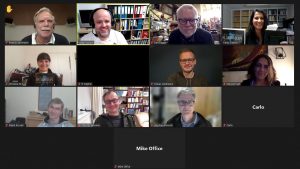
This research colloquium dealt with an interesting topic that involves a variety of intersections between art and science.
Keely Siebein opened her talk with a historical overview and introduction to soundscapes. The concept was founded by R. Murray Schafer, a Canadian composer and researcher. He collected soundscapes around the world in a research project that was published in workshops and lectures in the late 1960s and early 1970s. The work of his group was concluded with the famous book: “The Soundscape: Our Sonic Environment and the Tuning of the World”, which is an inspiring and helpful literature for researchers working in this field. Schafer covered the topics of recording, analysis, differentiation and acoustic design of soundscapes. It involves a multidimensional analysis that includes psychoacoustic, architectural, and environmental aspects of the data, ranging from simple sound pressure level measurements or an analysis of rhythm and tempi and room acoustic parameters to the emotional experience of sounds. Based on his studies, the ISO 12931-(1-3) standards provide an approach to qualify and quantify soundscapes. They specify the terms and definitions associated with soundscapes, as well as data collection, reporting requirements, and data analysis. They also include questionnaires for human perception analysis, which is a unique feature.
Keely showed several case studies explaining her structure and approach to analyze, model and design soundscapes in various projects. Acoustic and architectural design should be incorporated early in the planning process to create successful projects, from an initial inspiration to the final details. Therefore, this area of work involves a wide range of skills with scientific, creative, and inspirational backgrounds that are applied in a continuous evaluation process to bring a project to success.
We thank Keely for the great presentation and the very good Q&A session after the talk, which brought many deeper insights into her interesting work between art and science.
A recording of the presentation is available on YouTube.
